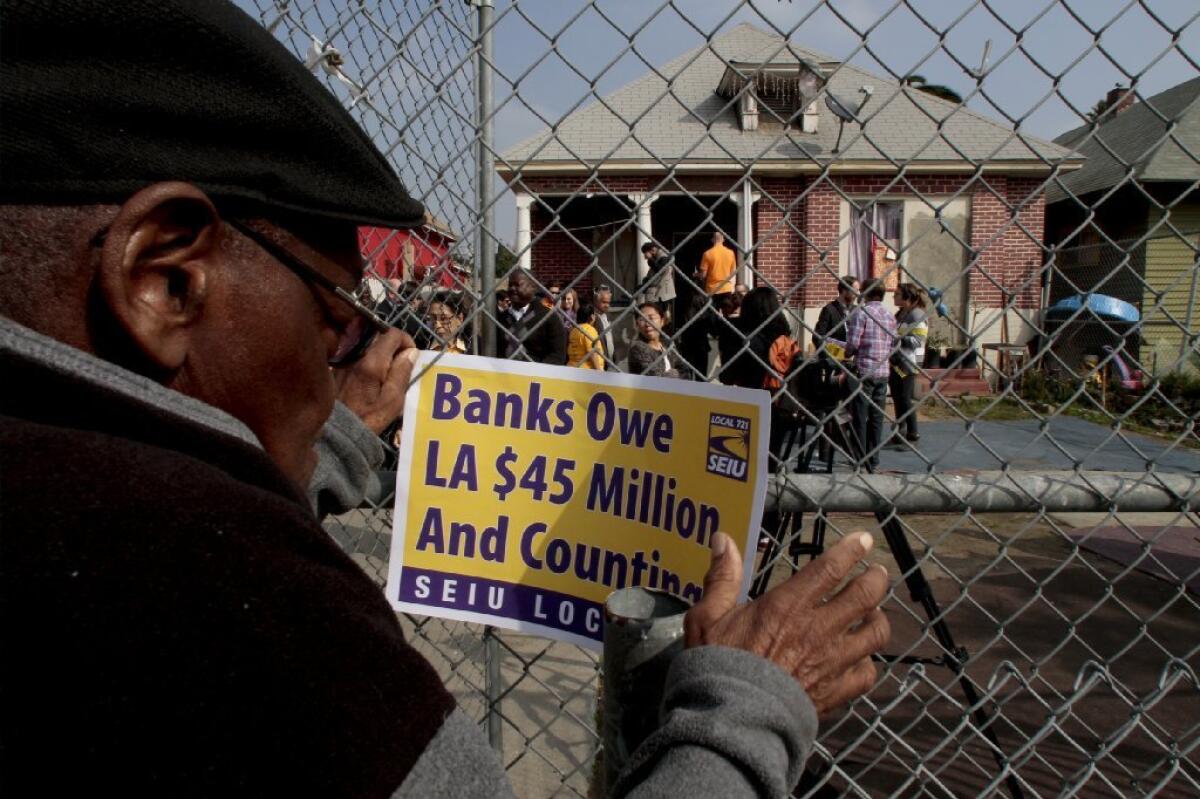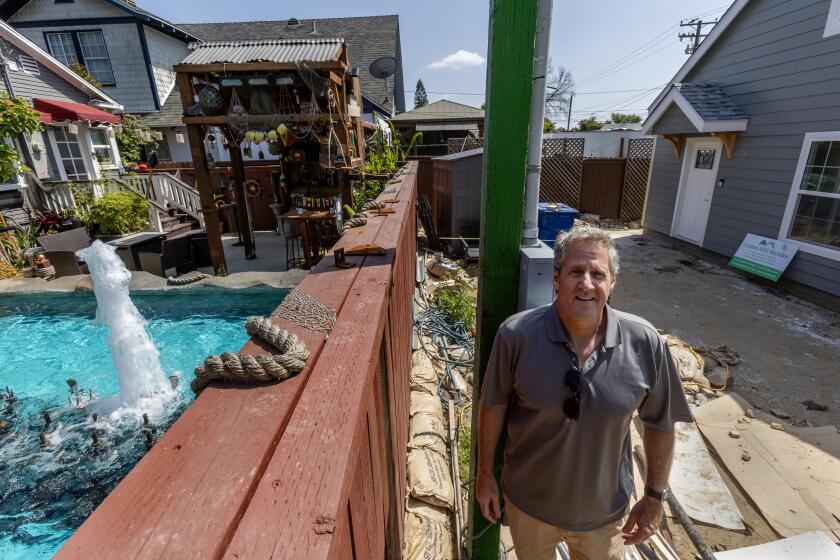Los Angeles officials propose tougher foreclosure registry

Los Angeles officials unveiled new recommendations Tuesday to toughen and make smarter use of the city’s foreclosure registry program.
Calling the 4-year-old registry well intentioned but “flawed” and “ineffective,” City Controller Ron Galperin released a 40-page audit of the program with recommendations to boost transparency and better fund inspections of blighted foreclosures. Council Member Gil Cedillo joined Galperin at a news conference, saying he plans to file legislation that would enact those recommendations and create a new inspection fee.
“This ordinance is a tool that has been underutilized,” Cedillo said. “This will allow for a proactive approach.”
The registry was created in the wake of the mortgage crisis to help city officials better track foreclosed properties and hold their bank owners more accountable for proper upkeep. About 32,000 houses have been registered on it over the last four years, including 9,200 last year.
But despite complaints from neighborhood groups that some foreclosures are crumbling nuisances, the city has never issued the up-to-$1,000-a-day penalty the law sets for banks that don’t maintain their properties. And there’s no proactive inspection, say officials from the city’s Division of Building and Safety, because there’s not enough money to hire inspectors.
Galperin’s recommendations, and Cedillo’s legislation, would aim to change that by streamlining the program and setting higher fees on fewer properties. It would create a “self-populating” database that would use third-party data to track homes that are in default but not yet foreclosed – instead of relying on banks to self-report. It would set higher registration and inspection fees on homes that banks repossess. And it would set aside money for inspection and code enforcement on the houses that are in the worst shape.
The idea is not necessarily to raise money via fines, said Galperin, but to nudge banks to take care of their properties instead of letting them crumble.
“This is not about fining everybody for what they’re doing wrong,” he said. “It’s about encouraging them to do what they’re supposed to do.”







